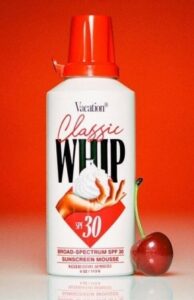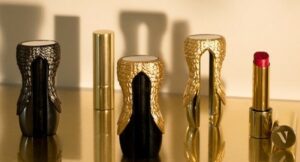As I started to write this piece, I reminded myself what a controversial topic cosmetic packaging has become.
With only 9% of plastic in the US recycled last year; 30% of our landfill composed of personal care packaging; and probably 90% of personal care products packaged in plastic (that will be on the planet forever), well…yes, it’s a hot topic on many levels.
The industry is moving as quickly as it can to find more sustainable options. The fact remains, plastic is amazing. But we must find alternative materials, and soon.
In the meantime, my goal is to address the importance of packaging in the beauty world and to reiterate what an enormous part of the purchase decision it remains.
We all know the luxury fragrance sector is performing well. Imagine that US$350 perfume in a plain, thin-walled, stock glass pour bottle with a label and stock screw on cap. No pump. No elegant, dense, paper wrapped and varnished, telescoping-lid set up box, with a custom platform to cradle the flacon. No heart shaped, private mold overcap. Not quite the same is it?
Imagine putting this scaled down package on the shelf at Bergdorf Goodman or Harrods. Imagine it on the brand’s website and featured in its TikTok video. Not exactly Instagrammable.
The Fragrance Foundation asked me to join the package judging panel for their 2023 awards ceremony.
The submissions were breathtaking: Layers of luxurious packaging in many forms and many materials. Collector’s items one and all. There were a few nods to sustainability, but justifying the luxury price point still appears to demand opulence and excess.
During my long career in the beauty industry, I’ve done a great deal of product testing with various consumer groups. The same product, tested in 2 different packages, can elicit very different responses.
Comparing a 30ml, private mold, coated glass oval bottle, with a small dose custom pump, and a gold overcap VS a 240ml, stock, rectangular, low density plastic bottle with a large dose, goose-neck pump provides a world of difference in terms of consumer perception of the retail price of the product, as well as the product efficacy. No contest!
Consumers will swear the formulas are completely different and that the one in the smaller, custom package is likely to be much more efficacious.
This shift to sustainability is an evolution and will require technological advances we can only dream about currently. So let’s move on to the less dystopian side of beauty packaging, as there is much to review here.
How do we encourage use of sunscreen?
Here’s a great example: Vacation Classic Whip SPF 30. Remember Reddi-Whip? The fluffy pre-whipped cream, the “whooshing” sound, the bright red aerosol can? Perhaps those memories and the powerful sensory cues will prompt better sunscreen usage: an important goal!

Will consumers actually buy refills?
I tried launching refillable lipsticks at Estée Lauder, many years ago. It didn’t work. Beauty Advisors didn’t appreciate the lower price point and customers felt the metal case became scratched and dull with use and wanted to replace it, not refill it.
There are several beauty brands (Dior, Olay, Glossier, Fenty, Bite, Rose Inc to name a few) currently promoting the refill concept: not only lipsticks, but pencils, moisturizers, cleansers, powder eyeshadows and blush.
A standout package in the refillable lipstick category is Valdé, conceived and designed by Margarita Arriagada, former chief merchant of Sephora. The hand-polished, refillable case is made with a zinc alloy and coated in liquid gold, the brand states. With the Valdé Refillable Lip System starting at US$150, the consumer needs to perceive the value.

The jury is still out on the refill concept, both from a consumer purchase perspective, as well as a step forward in sustainability.
Refills seem more viable in areas such as household products, shampoo, body wash and deodorant. Time will tell.
Packaging takes the lead
To conclude, I’ve explored a brand that is really pushing the packaging barrier!
Isamaya’s Industrial Collection of color cosmetics launched mid-2022. In the founder’s words (Isamaya FFrench, makeup artist to the stars): “Smart tools, reusable hardware including wearable rings and earrings — designed to inspire you to look at beauty through a different lens.”

Continuing the trend of leading with innovative package design, Isamaya recently launched “Lips”. The phallic shaped lipstick case is guaranteed to be a conversation starter is any situation!
Packaging, certainly in our visually-driven, social media obsessed beauty marketplace, has the power to help push a brand to stardom or into landfill.
Packaging is the first piece we encounter when shopping for products and that first impression is critical. It can in fact substantiate the price point and convince the consumer the product will deliver on whatever promise it’s making.
You can’t overestimate packaging’s role in driving consumer purchase.
Enjoyed this article? Get more by subscribing to our newsletter!
Feeling inspired to see ingredients and trends in action?
Then why not visit one of the in-cosmetics events around the world?

